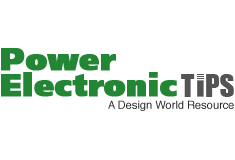by Leland Teschler, Executive Editor, @DW_LeeTeschler
Who do you suppose can ace a ten-question quiz about using power transistors?
We asked ourselves that question recently when we ran an informal contest on our powerelectronictips.com site. We know the answer in at least one case: The first person with a perfect score was Xiucheng Huang, currently working toward a Ph.D. at Virginia Tech’s Center for Power Electronics Systems.
The rhetorical query Huang’s score brings up is whether you have to be a Ph.D. candidate these days to ace a short test on power semiconductor circuits. We asked about power circuit education on such social sites as LinkedIn and EDAboard.com. The responses we got seem to show that until recently, power electronics was a subject mainly available only in grad schools.
The most thoughtful observations came from application engineers at eGaN maker Efficient Power Conversion, who are themselves recent grads. “As an undergrad, I had no exposure to power electronics,” said one. “There was one power engineering (T&D) class (for undergrads), but that was it. At the time, anything power related was considered mature and something of a dead end. I ended up taking RF and analog classes, which turned out to be a good fit anyway. In grad school, the power electronics program was brand new and offered as a grad/senior undergrad class…Outside the context of a power electronics class, I don’t think there is much exposure to the real implementation of power transistors and diodes, or even passive components that must handle power. This is especially true for magnetic components. I don’t think you gain a real appreciation until you burn some parts and/or yourself!”
Another EPC engineer confirms the impression that power electronics has only recently become a topic for undergraduates. “At Virginia Tech, there was one course that covered power electronics at the undergraduate level,” he said “There were many more at the graduate level. Glancing at the new course catalog, it appears they have added a power electronics lab and an undergraduate packaging class. I would guess other universities have fewer power electronics courses, since that is a main research area for VT faculty.”
Of course, sometimes the breadth of subjects you’re taught isn’t as important as what you do with the material you’re exposed to. “It’s not so much about what grade level EE students are introduced to power semiconductors. It is more related to how far along a person is in his/her career when the new power semiconductor technology is introduced. We studied a spec sheet for a 2N3055 power bipolar in a 2nd-year EE class, but it wasn’t until half a decade later that power MOSFETs were just starting to be known. When a new technology (like GaN) is introduced, it is up to working professionals or students to become familiar with it, no matter their age,” said one power engineer.
And some engineers don’t see formal classwork ever having much of an impact on power. “Personally, I feel universities will never handle power properly,” said one. “They can and do introduce product families, but devices are out of the question—there are just too many. There are enough transistors/SCRs/IGBTs/GTOs/triacs/*FETs/BJTs to keep the student busy for four years…I was lucky enough to have what I think was the best kind of instruction—a good teacher working on a project, with time to educate.”
This handbook is our small attempt at advancing power electronics education. We hope you find it worthwhile.


Leave a Reply